Your location: Home > NEWS > INDUSTRY NEWS
After using off-road lights for a period of time or following rainfall, attentive car owners might notice a presence of condensation or moisture inside the off-road lights. This phenomenon prompts a common question: if off-road lights are designed to be sealed, why does moisture accumulate inside them? Does this moisture affect their functionality?
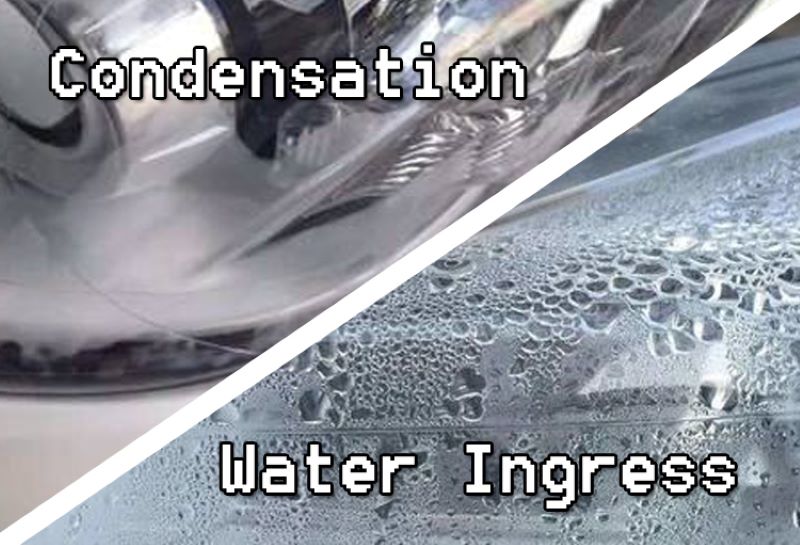
The primary cause of off-road light fogging is the presence of air, which contains varying levels of water vapor depending on temperature. For instance, during hot weather, the air can hold more water vapor, while cooler weather results in lower water vapor content. Excess water vapor in the air is the main culprit behind water vapor condensation within the off-road lights. Many contemporary off-road lights are equipped with moisture breathing holes, just like most of our products, but we called it as the 'imported breather valve'. When the off-road lights are turned on or off, temperature fluctuations between the inside and outside of the off-road lights cause water vapor to gather in areas with rapid temperature changes, leading to condensation. Therefore, slight condensation is considered a normal physical occurrence.
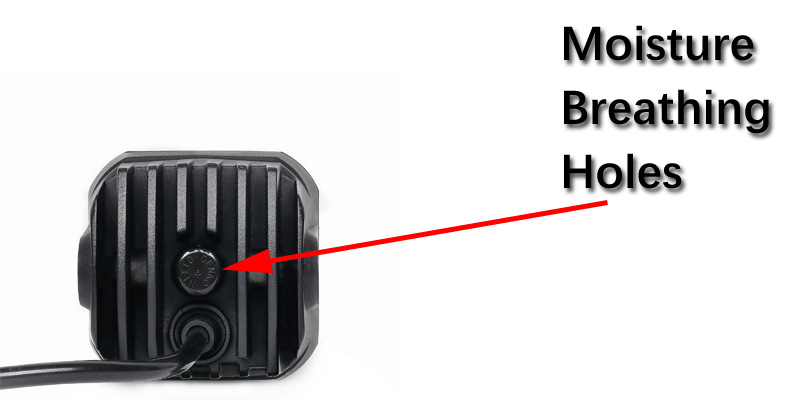
However, if the internal moisture condenses significantly, it's advisable to first inspect all aspects: whether the light PC lens, ventilation components, and the light housings are in their proper positions; whether the breathability of the ventilation components is normal; whether the light components (housing, PC lens, etc.) have cracks; whether any additional installations or modifications related to off-road lights have been made; and whether there is any accumulation of water from situations involving water exposure. If all external factors have been ruled out, replacement of the off-road lights may be necessary.
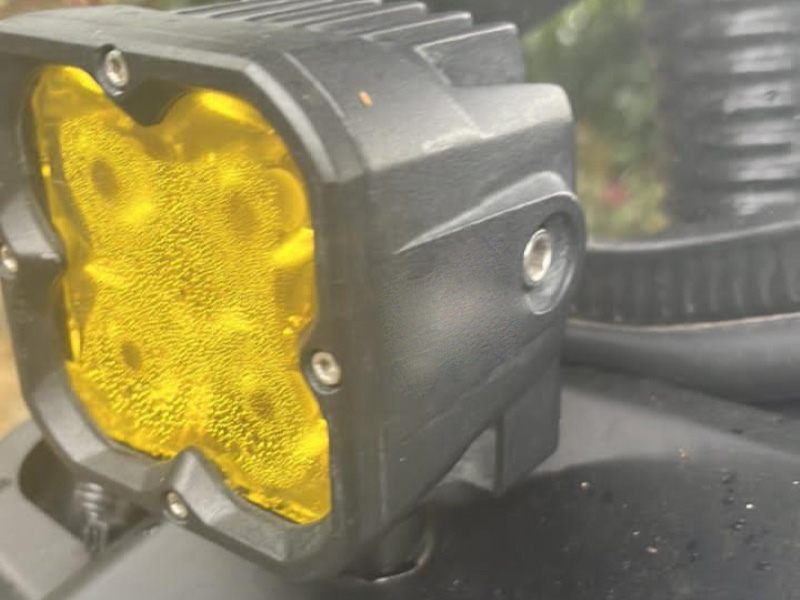
During the manufacturing process of off-road lights, it is unavoidable to encapsulate some air, which may also contain small amounts of water vapor. When the off-road lights are functioning, the LED chips generate heat. Consequently, the temperature decreases from the inside of the off-road lights to the outside. If the off-road lights contain a high concentration of water vapor and the external temperature is much lower than the internal temperature, the internal water vapor of the light will condense into small droplets on the reflector lens, resulting in condensation.
After exposure to sunlight, some of the water vapor inside the off-road lights will evaporate. Subsequently, when the internal air becomes saturated, off-road light fogging can occur.
During car washing or in rainy seasons, the air carries more water vapor. This water vapor enters the interior of the off-road lights through ventilation ports. Due to temperature differentials, the water vapor condenses on the light covers, leading to condensation.
After the vehicle goes through water, condensation forms due to the presence of water vapor. This is because when the vehicle goes through water, the engine and exhaust system become significant heat sources. Rainwater on these surfaces generates a substantial amount of water vapor, which may enter the off-road lights through pressure-balanced ventilation holes.
During car washing, many vehicle owners prefer using high-pressure water guns to clean their vehicles. If the accumulated water in the engine compartment is not promptly dealt with and the engine compartment cover is closed, the trapped moisture within the engine compartment might find its way into the off-road lights.
Therefore, after water exposure, heavy rainfall, or car washing, it's recommended to use an air gun to blow air into the corners of the engine compartment where moisture tends to accumulate. This will effectively remove any remaining moisture. However, these situations are generally considered normal occurrences. If you discover significant water accumulation inside your vehicle's off-road lights and the situation is severe, it's advisable to seek repair services. If the issue persists even after repairs, replacement might be necessary.
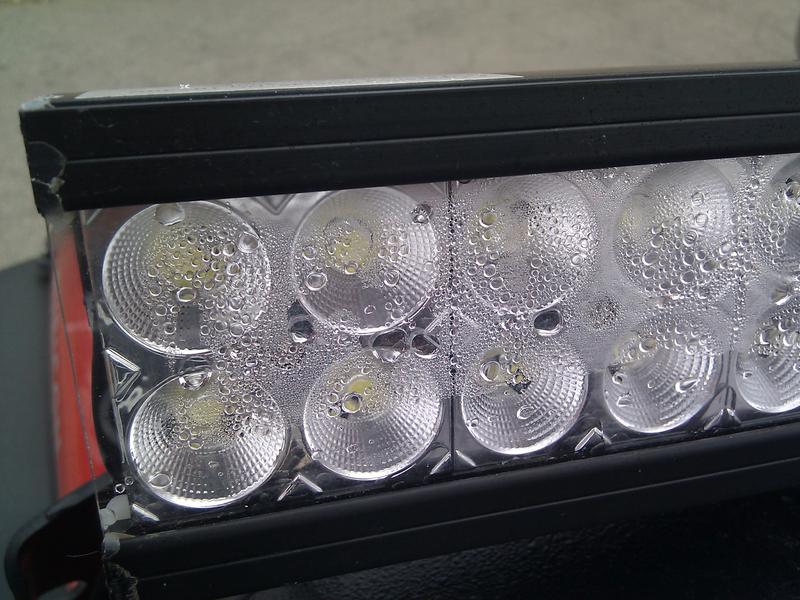
If the sealing of the off-road lights is compromised, contaminants such as rainwater can enter the interior, causing malfunctions in the lighting system. This not only impacts the appearance but can also jeopardize safe driving. Thus, whenever such issues arise, timely repairs are essential to avoid disruptions in normal vehicle operation and potential increases in repair costs. Excessive fogging inside the off-road lights could indicate leakage or seepage, likely caused by poor sealing, leading to water entering the interior of the off-road lights. Cracks in the light covers could also be a contributing factor. These issues require immediate factory repairs to prevent potential short circuits due to water entry, which could affect the entire vehicle's electrical system.
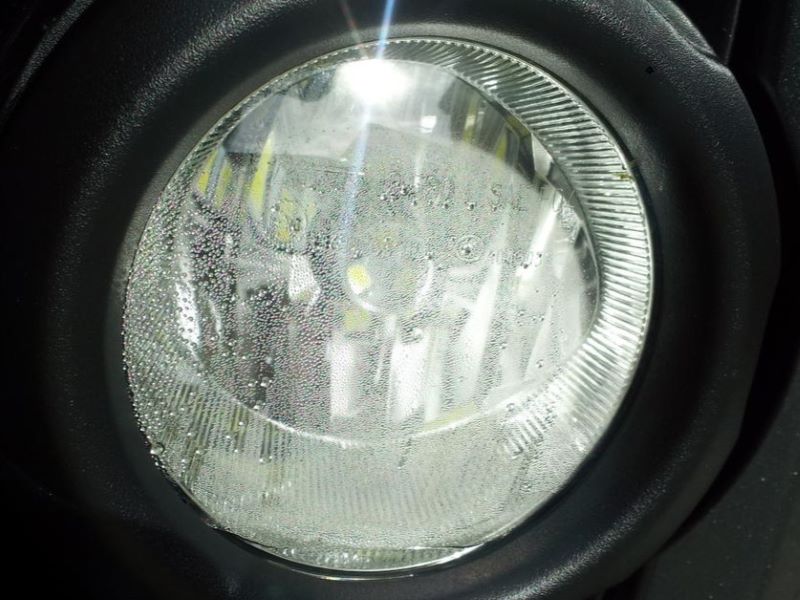
There are always some consequences. For instance, if water vapor adheres to the light covers, it can somewhat diminish the brightness of the off-road lights. As light needs to pass through these water droplets, some light may refract and reflect, ultimately reducing the off-road light brightness below the required level, affecting nighttime driving visibility. The risk of short circuits increases with a large amount of water entering. This not only raises the risk of circuit damage but also uneven heating, thereby shortening the lifespan of the off-road lights.
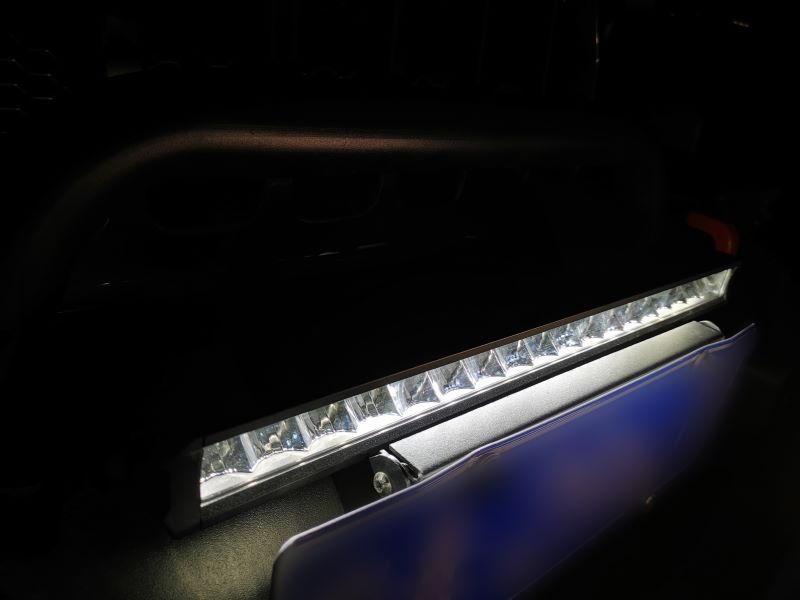
When you notice condensation, dampness, or water behind the light covers, there are two possibilities that can be easily distinguished.
The first scenario: If there is slight internal condensation, no water droplets form on the reflector surface. Instead, you observe a thin mist or small water droplets. There are no streaks or large water droplets present. This natural condensation occurs when water vapor inside the light cover condenses into small water droplets. In simple terms, it is a common occurrence and does not indicate product defects.
The second scenario: However, if you observe streak-like water condensation, significant internal moisture condensation, water droplet traces, or the formation of large water droplets on the light's surface, it indicates water has entered the light. In this case, the entire light requires repair. If there is substantial fogging or water accumulation inside the light covers after the vehicle has encountered water, it generally suggests a problem with the sealing performance of the off-road lights. This could be due to damage to the light cover or the light housing, or a malfunction in the sealing gasket between the light cover and the light housing.
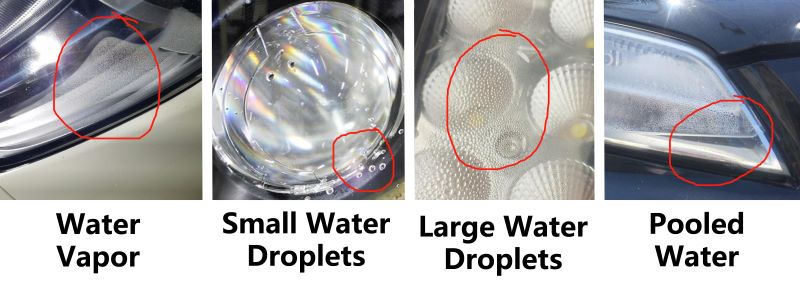
Condensation problems are closely related to environmental conditions, including temperature, weather, and humidity.
In most cases, off-road light fogging is not a major concern. Why is that? Because all you need to do is start the vehicle, turn on the off-road lights, and drive for a while. The fogging inside the off-road lights will automatically dissipate. This process generally doesn't cause damage to the off-road lights or electrical circuits. However, it's worth noting that as the off-road lights cool down after being turned off, air with water vapor or cold air may re-enter the off-road lights, potentially leading to fogging again. As it is a physical phenomenon, some level of fogging within the off-road lights is considered normal. off-road lights function as heat sources for light emission. When the off-road lights are on, the temperature inside the light compartment rises. When the off-road lights are turned off, the temperature decreases rapidly. Due to these temperature fluctuations, water vapor condenses on the light cover, forming condensation.
Apart from using the heat generated by LED chips to evaporate the condensation inside the off-road lights, you can also drive the vehicle to a warmer location. Additionally, many of our light models are equipped with built-in pressure-balanced ventilation holes, allowing air to enter and exit to facilitate the evaporation of condensed water vapor. These vents prevent liquid water from entering the lights. Here is a tip: when you turn on the off-road lights trying to get off the condensation, you can choose to open the ventilation holes to expedite evaporation by removing the breather valve.
If the weather is dry, you can disassemble the off-road lights to blow away the condensation inside. Then turn off the vehicle and off-road lights, spray water on parts where water seepage might occur, such as waterproof covers. If the off-road lights fog up after a few minutes, it indicates that poor sealing is causing the issue. If not, the problem might be in the connection between the light cover and the light housing. If damage or poor sealing is found, it's crucial to replace or reapply waterproof glue promptly. Additionally, some high-power LED light models generate more heat during operation, which aids in evaporating condensed water vapor.
In cooler weather or when temperatures drop, if heat is insufficient, you can place the off-road lights in direct sunlight or any warm, dry area to expedite water vapor evaporation.
If water ingress is suspected, it's recommended to keep the engine idling and open the light's breathing valve, allowing the off-road lights to remain on for about 30 minutes. Then, use an air gun to increase airflow within the light cover until dehumidification and defogging are complete. Simultaneously, identifying the points of inadequate sealing, cleaning and drying them, and then resealing them is vital. Owners with limited mechanical skills can also opt for repairs at a repair shop. In cases of persistent water ingress due to poor sealing, prolonged neglect could result in short circuits, escalating repair costs.

